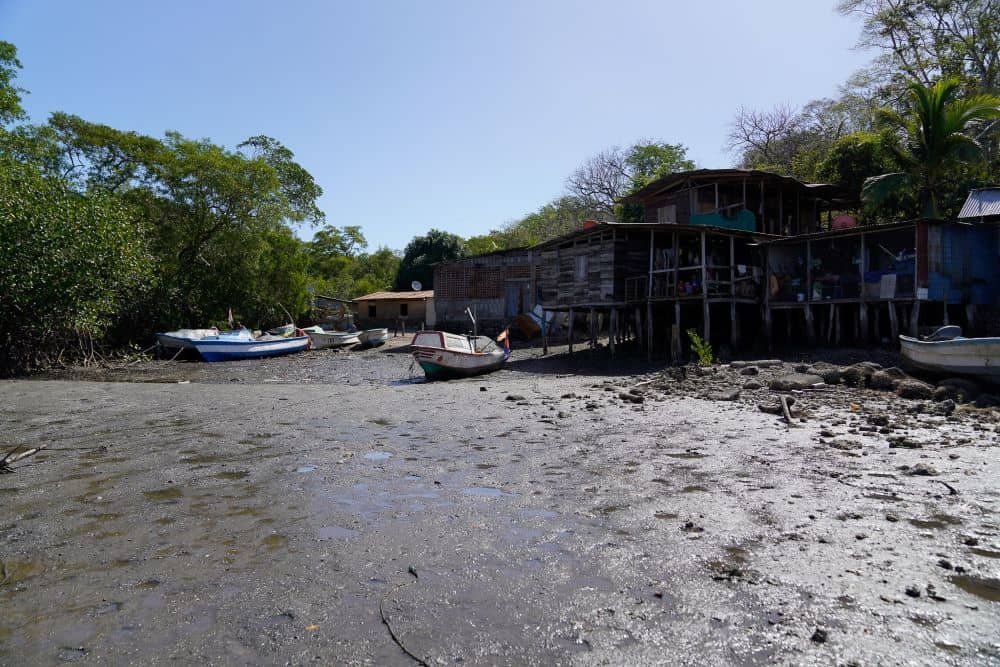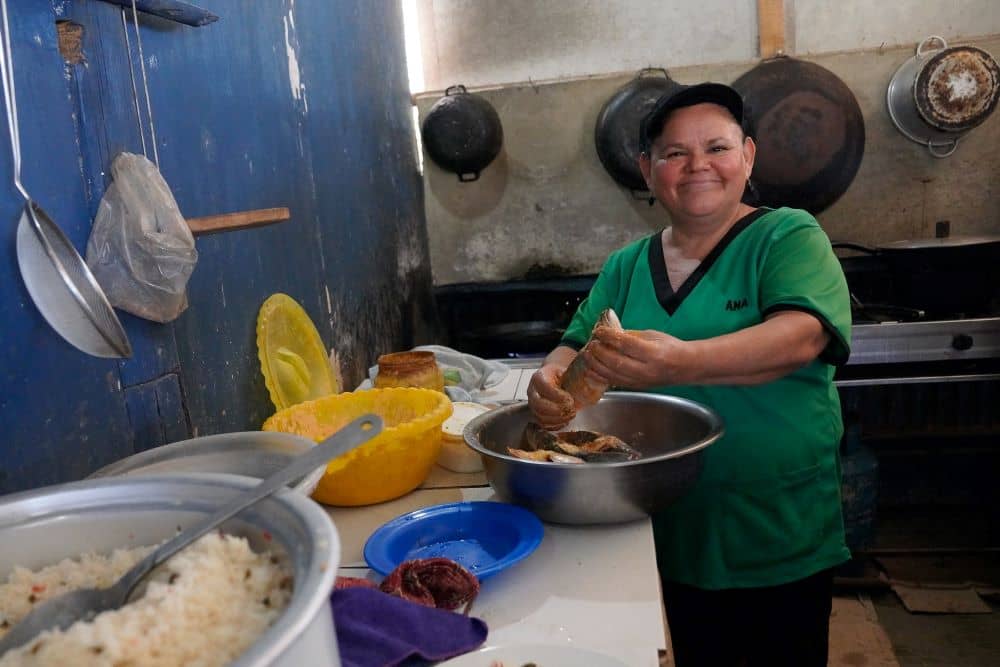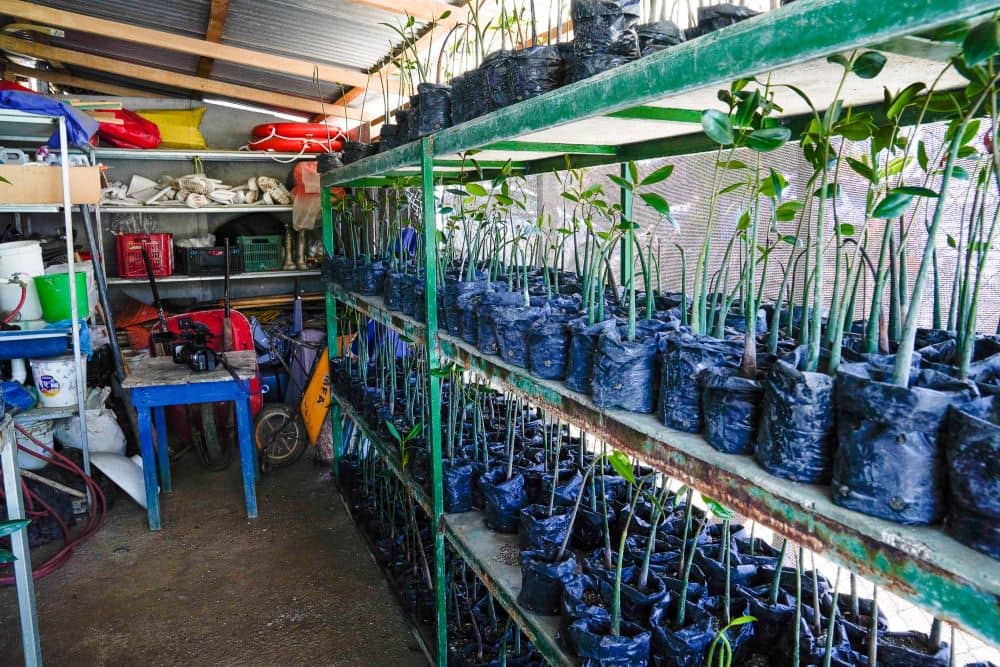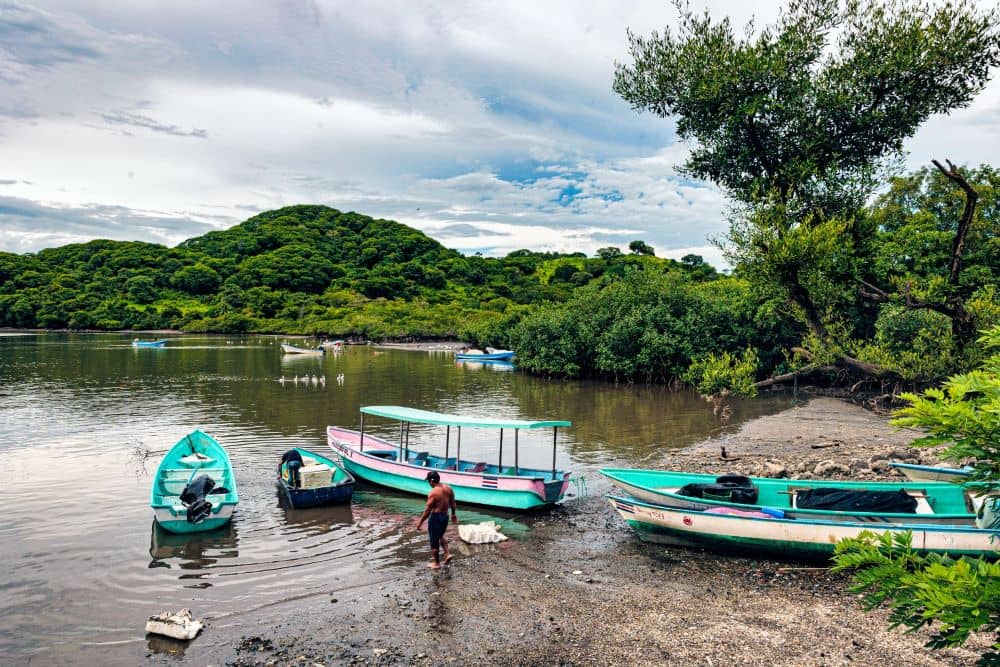In Manzanillo, Costa Rica, we meet Ana Cecilia Solís Ugalde, a community leader who created a mangrove nursery to build climate resilience in her community. This is the sixth of the “Voices from the Frontline (Phase III)” stories by GRP and ICCCAD supported by Irish Aid.
Costa Rica stands out for its beautiful landscapes, majestic beaches, and friendly people. It is home to 5% of the world’s biodiversity within its 51,179 km². However, due to its size and geographic location, it is highly susceptible to the adverse impacts of climate change. Costa Rican communities depend on the climate to develop key economic activities such as tourism, artisanal fishing, and agriculture. This is why the country has made important efforts in recent years toward environmental protection and nature conservation. Efforts include initiatives such as the one led by Doña Ana Cecilia, a community leader in the Manzanillo area, where Costa Ricans, together with a women’s cooperative, created a mangrove nursery to prepare for the effects of climate change and contribute to their community.
Manzanillo is located in the Province of Puntarenas, a coastal area where the main economic activity is artisanal fishing. Likewise, their lives and livelihoods are in danger because more than 80% of the community lives immersed in the mangrove area, which is a maritime-terrestrial zone governed by Law on the Maritime Terrestrial Zone N° 6073. This represents three problems for this community: a) it can’t be economically developed due to limitations of the law as it belongs to the state, b) they cannot build their homes in another area due to economic limitations, and c) it is negatively impacted by climate change, causing loss and damage.

By being located in the middle of the mangrove swamp, the community faces high climate risks and as a result experiences high levels of loss and damage. Heavy rains and droughts can cause strong tidal waves, floods, months without fishing, and a lack of drinking water. Flooding due to climate change is a risk, and mangrove forests, despite being natural barriers, have decreased in Costa Rica since the early 90s leaving coastal communities susceptive to losses and damages. Additionally, 80% of houses in the area are located on the coastline and community members have seen the sea level rise and draw close, sometimes reaching the entrance of their homes.
There are many cases of loss and damage due to climate impacts. Some of the challenges the Manzanillo community face include women being overloaded with work due to care and new economic responsibilities, people migrating from the coastal to the central regions in search of employment, water and food insecurity, and the limitations of development in the region. Ana Cecilia Solís Ugalde, a woman who lived in this area for 30 years, was encouraged to start a mangrove planting process in the Manzanillo area to reduce climate risk.

Ana received training to understand the effects of climate change and was equipped to make informed efforts to reduce climate risk in her community. She learned that in the months of drought, there was a lack of drinking water and not enough fishing, therefore no family income. And in the months of intense rains, strong tidal waves would cause flooding in their community. Loss and damage could be identified as a challenge for the community’s well-being and future.
Being aware of this pushed her to develop MUDECOOP, her mangrove planting project, and a communal dining room. Despite being interrupted during the COVID-19 pandemic, MUDECOOP returned with more strength in 2022. In the months of drought, her mangrove nursery serves as a community kitchen and provides one meal per day to children from families without income. “At the time of the fishing moratorium, people have no opportunity to raise money for the fishing season, and they cannot buy food, ” Ana said filled with emotion. “We organised ourselves and opened a communal dining room in the mangrove nursery, to give one meal a day to 100 children on Saturdays and Sundays,” she explained. The fishing moratorium is a measure to help the battered ecosystem of the Gulf of Nicoya, on which this community depends for survival. The community kitchen is a measure to help address food insecurity caused by drought and a lack of access to other food sources.
From that moment, due to her long-standing role as a leader and provider of community service, a new project emerged, which turned out to be her most important one. Despite knowing nothing about planting mangroves, she ventured out and shared her spirit with other women. “It has been difficult since we were a group of women without the necessary resources. We were going to carry out the reforestation in sandals without being aware of the contamination around the mangrove, with the shovels from our house”, recalls Ana Cecilia.
With the support of other organizations, their project grew and they managed to create the first covered mangrove nursery in the area. Little by little it became a family space where mothers went to tend to the mangroves with their daughters and sons. She continued her training in planting mangroves and learned that the mangroves are a natural barrier to the effects of tidal waves. This motivated her to continue with this project despite having a lack of funding.

Ana Cecilia is also part of the Administrative Board of the ASADA in her community. “Within ASADA, one of the objectives we have is to find another source of water. One of the ideas that I was proposing was to make water tanks so that people can collect water,” she said. Her ideas and leadership continue to position her as a community leader who works toward promoting Manzanillo’s well-being.

Thanks to the creation of this nursery, Ana is building climate resilience and empowering women in her community. MUDECOOP also serves to address the loss of income by providing an incentive for community tourism as an alternative economic activity. The project is also working to recover the fishing activities in the community.
The interviewer’s perspective
Ana Cecilia’s story is an inspiration to others working to address loss and damage and help their communities adapt to the adverse effects of climate change, while at the same time promoting new opportunities for community members. These efforts will result in empowered women with new sources of income, and young people with a vision of finishing their studies. Capacity building has helped spur this transformation. La Ruta del Clima supports Ana’s efforts by providing gender equality-focused capacity-building activities.
About the interviewer
Jennifer Rojas, is the strategic communication coordinator of Ruta del Clima, a Costa Rican non-governmental organization that promotes public participation in climate and environmental decision-making, through education, awareness, training, and communication on climate change in Latin America.
About the interviewee
Ana Cecilia Solís Ugalde is a community leader who has lived in Manzanillo for 30 years. She created the first covered mangrove nursery because she has committed herself to the future generations of her community. With the support of other women in the community, they have planted more than 4,000 mangrove plants. She seeks financial opportunities for women in her community that allow them to dream of a secure and economically active community for themselves and their children.








